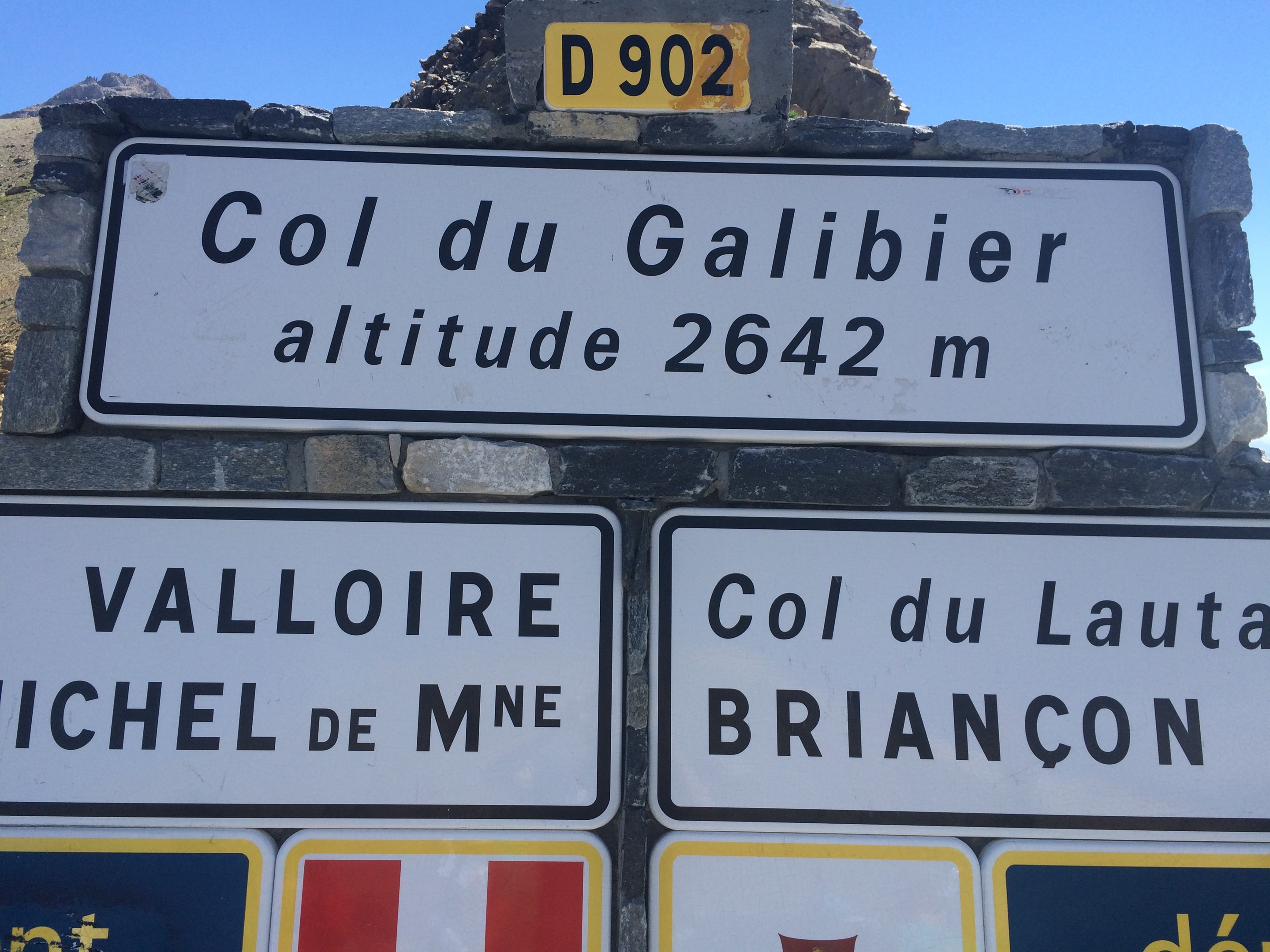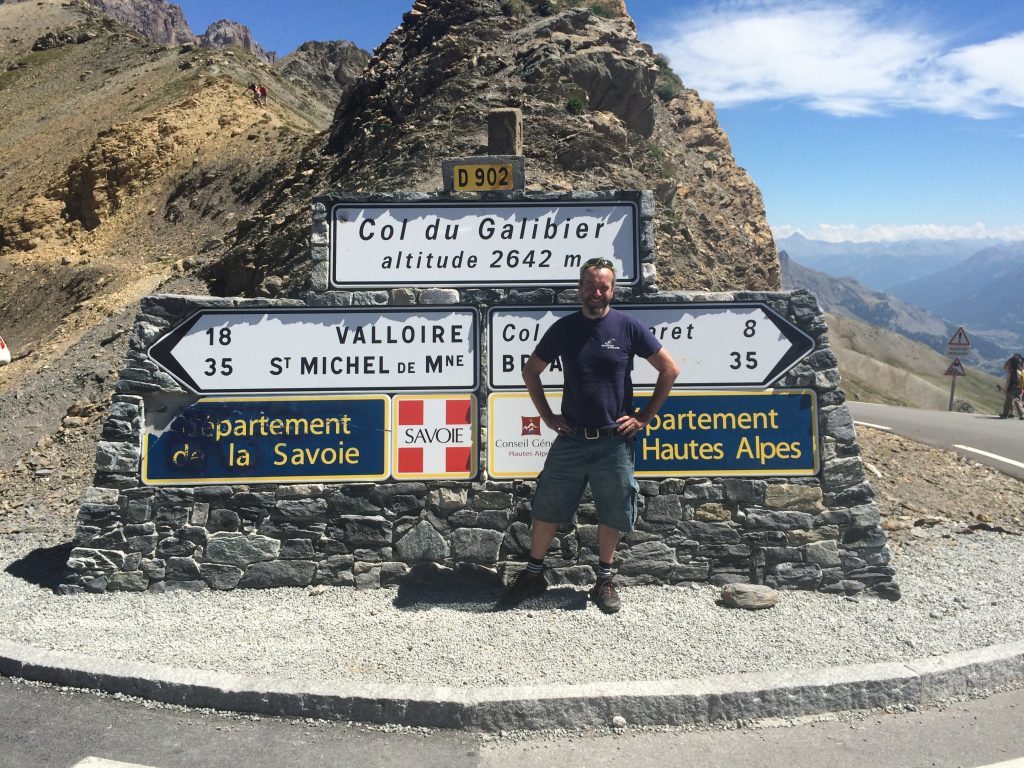Stage 17 of the 2017 Tour de France on Wednesday July 19 will take the riders on an epic 183km journey from La Mure to Serre-Chevalier. It is the first of two big Alpine stages in this year’s race (the other is the following day with the stage from Briançon to the Col d’Izoard) and will shake up the general classification as riders head over the giants of the Croix de Fer and the Col du Galibier.
The route over the Galibier from the northern Maurienne valley actually takes in two climbs. The first of those, the Col du Telegraphe, is where in 2005 my wife and I stood at the roadside with a bottle of wine in one hand and a lump of Alpine Beaufort cheese in the other and watched our first TdF mountain stage.
The Kazakh, Alexander Vinokourov, won that day, ahead of his breakaway companion Santiago Botero, but for me the excitement of the racing took a back seat that day as my wife told me she was pregnant with our daughter. I guide cyclists over the Telegraphe and Galibier every year now and I still have a big grin on my face when I pass the hairpin bend on which we stood.
From the summit of the Telegraphe riders make a short descent towards the village of Valloire before they start making the ascent of the Galibier.
It is not until you are in the heart of the cauldron that you can really appreciate what a monster of a climb the Galibier is. Passing the glass memorial to Marco Pantani, who won the stage over the Galibier and Les Deux-Alpes in 1998 and sealed his TdF victory that year, you turn and face seemingly impenetrable rock walls ahead of you.Motor vehicles now take a detour through a tunnel near the summit to arrive on the other side near the monument to TdF founder Henri Desgrange, who loved the Galibier more than any other climb on his race. Cyclists don’t have that luxury and instead they must make their way up the final kilometres to the narrow col at the summit at 2,645m.
There is just enough space for a small car park which is usually chaos in the summer as thousands of motorcyclists, drivers and cyclists jostle to get their pictures taken in front of the col summit sign.
The other side drops steeply towards the Col du Lauteret. The views to the north extend to the Mont Blanc massif and in the south they are even more dramatic with glaciated summits towering above you in the Parc National Des Ecrins.
The Galibier first featured in the Tour de France in 1911, when riders still rode on unpaved roads, on bikes with only two gears. It was the first year that the TdF had ever raced in the high Alps and Emile Georget was the first rider to cross the summit, setting the scene for the next century of battles that would take place on the slopes of the Galibier. One of those was the final battle between two great rivals: Jacques Anquetil and Raymond Poulidor. Anquetil had won the TdF on five previous occasions and Poulidor (nicknamed The Eternal Second) had always been there trying to foil his great nemesis’s victory. Even in 1966, when both riders had lost their chance at racing to overall TdF victory in Paris they could not let their rivalry die.
On the slopes of the Galibier Poulidor attacked, Anquetil reacted and countered the attack with one of his own – he had nothing to gain from doing so other than pride over his rival. Both rode side by side up the slopes of the Galibier, countering each other’s attacks. Poulidor piled on the pressure, but couldn’t shift his nemesis. It was the final skirmish between two great champions. Hopefully in 2017 the mountains in the TdF will provide a similar Battle Royal.
Join the Blazing Saddles Strava Club at: www.strava.com/clubs/BlazingSaddlesWeekendCourier
Where to Ride? Moffat and the Devil’s Beef Tub
Start/ Finish: Moffat town centre OS Landranger 1:50000 NT085052
Distance: 44miles/ 71km
Suitable For: Road cycling
Description: The Scottish Borders have a multitude of quiet roads, several that have featured in the Tour of Britain road race. This route starts in Moffat and heads up the long, but easy climb up the Devil’s Beef Tub. Drop down into Tweedsmuir and then turn right to the Talla and Megget reservoirs. Prepare yourself for some steep climbing between these two reservoirs. Take a right turn onto the A708 passing St Mary’s Loch and climb up again towards Paper Hill before descending down towards the Grey Mare’s tail and then back to Moffat.











